

A website is often the first impression a visitor gets of your business, and in that brief moment, it should make them think, “This is exactly what I was looking for.” The right website content can grab attention, spark interest, and encourage visitors to explore further. But how do you make sure your website’s user experience delivers that perfect first impression every time?
Let’s look at 14 tips that will help you craft content that engages visitors and leaves them feeling they’ve found exactly what they need. Let’s dive in and make that website of yours unforgettable.
When you sit down to write, the first thing to figure out is “why” you’re writing. Knowing your end goal helps you stay focused and makes sure the website content hits the mark.
Here are some things to consider as you define your content’s purpose:
These questions will help to create content that fits your audience and business goals.
Start by researching their demographics—age, gender, location, education, and income level. You can gather this data from tools like Google Analytics, which helps you understand where users are coming from and where they are going.
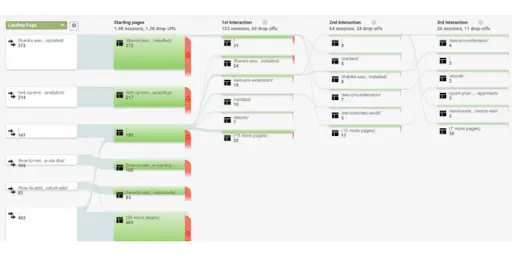
But don’t stop there—dig into psychographics, too! This is where you explore their interests, values, and lifestyles. Surveys or social media polls can provide valuable insights.
Remember to look at your competitors to gain insights into their online presence. Tools like One2Target or SEMrush give you a broader view of your competitor’s target audience's age, gender, and occupation. See what kind of content they’re producing and check out what’s getting the most engagement.

Finally, use all this information to create detailed audience personas—these will represent the different segments of your market and help you customize your content to truly connect with them.
Finding the right keywords ensures your content reaches the right audience by creating an effective online presence. Start with tools like UberSuggest,Ahrefs, or Google Keyword Planner. These platforms provide search volume, competition, and related keywords.
Ubersuggest helps by providing content ideas. All you have to do is type in the relevant keyword, and it gives you related articles that rank well, along with the high-ranking keywords used in them that help them perform well.
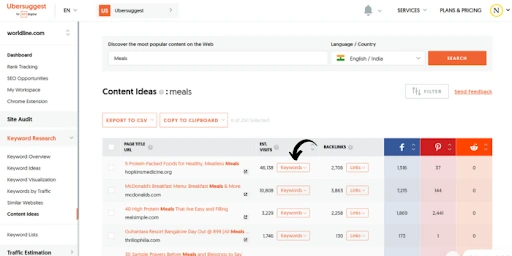
You can also find your competitor’s high-ranking keywords by entering a competitor’s URL into the tool to discover the keywords driving their traffic. Focus on terms they rank for, but you don’t.
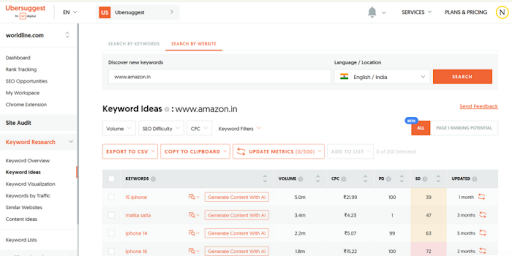
Sort keywords by relevance, difficulty, or intent to match your goals. For example, prioritize terms with high purchase intent if focusing on conversions.
Finally, keep track of seasonal or trending terms with tools like Google Trends to stay ahead.
Analyze competitor pages by asking:
This analysis helps you spot gaps, gain inspiration, and create content that connects.
A strong headline can play a vital role in boosting your online presence. To write compelling headlines, focus on clarity and emotional impact. Start by identifying the core benefit your content offers—what problem does it solve, or what value does it provide?
Then, use language that sparks curiosity or urgency, like asking a question or addressing a specific need. Balance creativity with precision; your headline should intrigue without misleading.
For instance, the headline "Is Your Business Powered by Content? Let’s Scale Together" engages by posing a direct question, addressing the business’s content needs, and offering a collaborative solution. It’s concise and clear and emphasizes growth and scalability, making the reader curious to learn more.
Test multiple versions to see what speaks most with your audience, ensuring it aligns with the tone of your content.

When crafting your content, focus on what your audience truly cares about—how your product or service will make their lives easier or better. People come looking for solutions, not just features. They want to know what’s in it for them. Instead of listing features, enhance your online presence by emphasizing the benefits—how your offering will solve their problems, save them time, or improve their experience.
For example, instead of saying "Our tool has a built-in analytics dashboard," say "Easily track your progress and make smarter decisions with real-time insights." Well-written content should make their user experience amazing so that they know you understand their needs and are ready to deliver results.
Structure your online presence truly engaging so readers can easily find what they’re looking for.
While all of this makes it easier to scan, remember to embrace long-form content when necessary—it’s a great way to dive deep into a topic while still keeping the structure clean and readable.
Here’s an example of how Lexiconn’s website effectively incorporates all these elements.
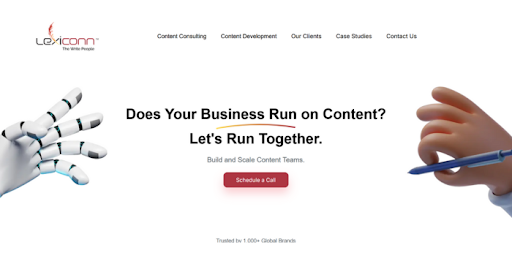
Instead of sounding robotic or overly formal, write as if you're talking to a friend or a colleague. Use simple language, ask questions, and keep the tone light but informative. This approach builds a connection with your audience and encourages them to engage with your content.
Share real-world examples or anecdotes that your audience can connect with. This helps make your content feel more human and less like an advertisement or formal article.
When your content feels approachable, readers stay on your page, explore further, and take action. To ensure your website content is engaging, use tools like Grammarly for grammar and readability checks.
Additionally, you can add your content to platforms like Yoast SEO to optimize it for search engines and get feedback on how to improve your SEO strategy. Use this feedback to refine and enhance your website content for better performance.
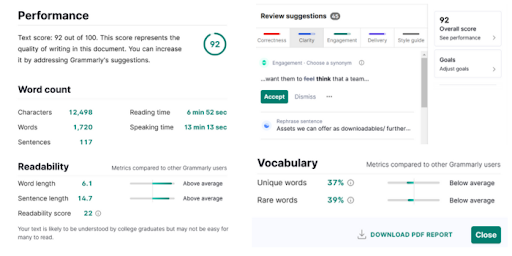
Storytelling is a compelling way to engage your audience and make your online presence more memorable. Instead of just presenting dry facts or information, weave a narrative that draws readers in.
Start with a relatable situation or problem, and then show how your solution (or product) makes a difference. People are more likely to engage with website content that evokes emotion or sparks their curiosity.
Use characters, conflicts, and resolutions to create a flow that makes your audience want to keep reading. Don’t just tell them what you do—show them the impact through a story that connects with their experiences.
You can make your website content feel more personal, human, and engaging, helping your audience connect with your message on a deeper level by incorporating storytelling,
Now that you’ve identified the right keywords, start incorporating them naturally throughout your website content. Avoid keyword stuffing—aim for a smooth, conversational flow that still includes your target terms.
Place them in key areas such as your headline, subheadings, and the first 100 words. Additionally, make sure to include them in your meta descriptions, image alt text, and URLs.
This helps search engines understand your content more effectively and boosts its chances of ranking higher in search results. By weaving keywords seamlessly into your website content, you’ll enhance its SEO without compromising readability.
Every piece of content should have a clear purpose, and a well-crafted call to action (CTA) guides your audience on what to do next. Whether it’s subscribing to a newsletter, downloading a resource, or making a purchase, your CTA should be direct, easy to understand, and action-oriented.
Make sure your CTAs stand out visually and use strong, action-driven language like “Get Started,” “Learn More,” or “Join Us.”
Place them strategically throughout your website content—at the end of a post, within the middle, or even as a pop-up—to increase conversion rates. By providing a clear next step, you help your audience engage further with your brand, making it easy for them to take action.
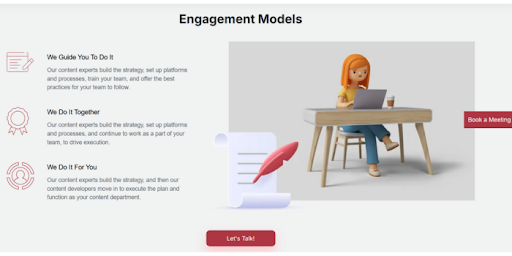
While it's important to demonstrate expertise, using overly technical language can alienate your audience, especially if they're not familiar with the jargon. Keep your website content simple and accessible, ensuring it’s easy for your readers to understand, no matter their background.
Use everyday language and explain complex concepts in a way that’s easy to digest. If you do need to use technical terms, make sure to define them clearly. This approach helps maintain engagement and ensures your audience feels comfortable and confident as they read, without feeling overwhelmed.
For example, instead of “Our platform leverages advanced API integrations,” say, “Our tool connects seamlessly with your favorite apps.”
When done right, visuals on your website do much more than just decorate the page—they play an important role in communicating your message and making your website content more impactful.
Visual elements like images, videos, and infographics help break up text and guide readers’ attention to the most important parts of your website content. They also make complex ideas easier to understand. For instance, a chart or infographic can quickly explain a concept that might take paragraphs to describe.
On top of that, visuals improve user experience. A website with a lot of text can feel overwhelming, causing visitors to bounce off quickly. But with engaging visuals, you’re giving your readers a reason to stay longer. They help illustrate your points, making them more memorable and easier to retain.
A product video, for example, lets potential customers see your offering in action, while a well-designed image can reinforce the emotions or benefits you want to communicate.
LexiConn can help you with interactive content to engage your audience.
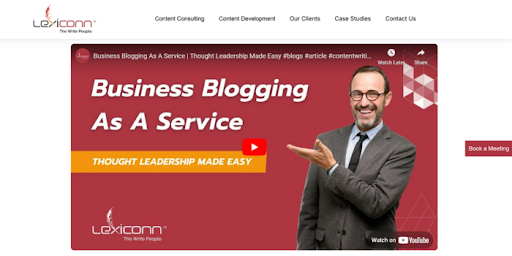
No matter how great your website content is, sloppy grammar, spelling errors, or unclear sentences can quickly turn potential customers away. That's why editing and proofreading are non-negotiable steps in the content creation process. After you’ve written your website content, take the time to review it carefully to ensure it’s polished and error-free.
Read through your content with a critical eye. Make sure your content flows logically, with a clear beginning, middle, and end. Tighten up any sections that feel overly wordy or unclear.
Proofreading is the last step to catch spelling, punctuation, and grammar mistakes. Tools like Hemingway or Grammarly can help spot errors and enhance readability.
You can also seek professional help. Lexiconn can assist with proofreading and creating engaging website content that connects with your audience.
To maintain engagement and ensure your website stays relevant, it’s important to keep your content fresh and up to date. Stale or outdated website content can quickly make your site seem neglected and lose the interest of visitors. Regularly updating your content shows that you’re active and committed to providing valuable information.
Start by reviewing your existing website content and look for opportunities to update it with the latest facts, statistics, or trends. For example, if you’re writing about industry developments, make sure your content reflects the most current news or practices. You can also refresh old blog posts with new insights, better formatting, or recent customer testimonials to keep them relevant.
Additionally, adding new types of website content—blog posts, case studies, videos, or product updates—can help you maintain a dynamic site. This attracts repeat visitors and boosts your SEO ranking, as search engines favor websites with regularly updated content.
You can get your content audited by a content writing agency like LexiConn. We are comprehensive and detail-oriented to ensure quality content.
Every word on your site should serve a purpose—engaging your audience, building trust, or driving action. If you're ready to change your content strategy, Lexiconn can help.
We specialize in creating content that connects and converts, offering a free pilot to show you what we can do. Don’t forget to check out our free ebook for even more insights into creating impactful content. Let’s work together to make your website stand out!



I have read and accept the Privacy Policy
Read More